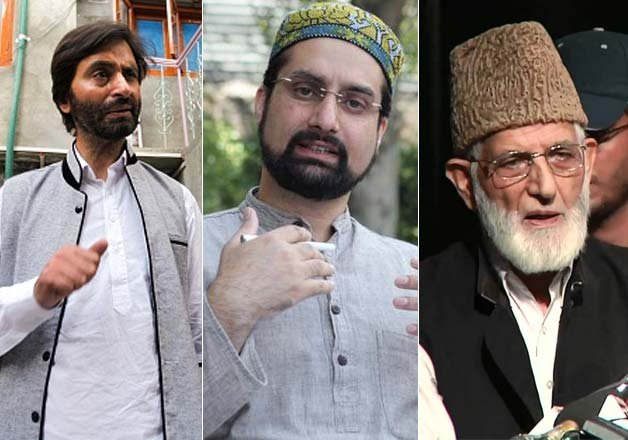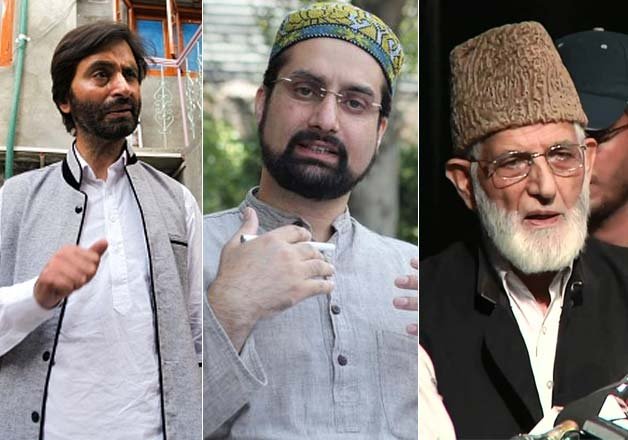

The Kashmiri separatist leaders’ recent visit to Pakistan and POK provokes both hope and disappointment
What looks good is not always as great. So when a group of Kashmiri separatist leaders took the leap across the Kamaan Post, now rechristened ‘Aman Setu’ or Peace Bridge at the Line of Control on the road from Srinagar to Muzaffarabad, all in all, in spite of the hype created, the event was not as encouraging for peace as touted to be. The Kashmiri leaders’ two-week tour of Pakistan and Pakistan-administered Kashmir has been a mixed bag of both hope and disappointment.
The good things first. For the first time the separatist leaders were given free access to the land across the border, a long-standing demand. The journey turned out to be one in a series of symbolic gestures between New Delhi and Islamabad to facilitate interaction between the divided people of Jammu and Kashmir on both sides of the Line of Control (LoC). It imbues optimism that the separatists will be engaged in a dialogue soon. The not-so-good things: the composition of the team on board the mission across the LoC may be merely one aspect of the whole, but the lack of cohesiveness among those who visited was what makes the entire visit a dampener. Besides, the question of who represents the people of Jammu and Kashmir is far from resolved.
The greatest bane of separatist politics in Kashmir, their division and gradual disintegration from one umbrella organisation of the All Party Hurriyat Conference (APHC) into different groups and singular organisations, followed them across the LoC. The mood that would shadow the entire journey was set on the very first day, when Yasin Malik, chairman of the Jammu Kashmir Liberation Front (JKLF), and a motley group of the Mirwaiz Umar Farooq-led faction of the Hurriyat sat in two different buses to cross the LoC. Similarly, the statements that followed during their fortnight-long visit clearly lacked any cohesion.
What was significant was the Hurriyat’s resemblance in tone to what Pakistan President Pervez Musharraf has been saying of late. The Mirwaiz chose to stick to the discourse of autonomous regions and division on geographical lines within Jammu and Kashmir on both sides. His step down from the Hurriyat’s official position on UN resolutions was also in keeping with Musharraf’s latest mantra, of thinking outside the box. Their itinerary was restricted to official functions and officially sponsored visits, in an unflattering comparison to Malik, who chose to meet several groups outside the official influence and was openly critical of Pakistan’s policy and the bid by the leadership of Pakistan-controlled Kashmir to romanticise militancy. The day they landed in Muzaffarabad, the government of Azad Jammu and Kashmir declared a public holiday. The restraint on any adventurism beyond official patronage, in terms of both rhetoric and the choice of people they met, was intended.
The picture of disunity within the separatist camp was balanced by one event alone that sparked a tinge of optimism – The warring factions of the Jammu Kashmir Liberation Front led by Yasin Malik on this side and Amanullah Khan on the Pakistani side finally sinking their differences and deciding to merge into one group. The move has been received very well on the Pakistani side of Kashmir and may eventually help to strengthen an organisation which not only spearheaded the armed struggle but was the first to discard the option of guns and talk about a non-violent resolution to the Kashmir dispute with its decision of unilateral ceasefire in 1995. As for the party’s ideology and the consistency it maintains in its stand, JKLF’s appeal continues to be broad-based in most parts of Jammu and Kashmir on both sides of the dividing line.
Unfortunately, this semblance of cohesion failed to inspire any unity within the separatist camp. The JKLF and the Mirwaiz-led Hurriyat represented two different streams. Back home in the valley, the Syed Ali Shah Geelani-led faction of Hurriyat, which voted against embarking on the journey to Muzaffarabad and beyond, was talking on yet another plank. Its reservations on the visit added yet another dimension of confusion to the cacophony of voices emanating on Kashmir.
The Pakistan government’s response was, however, more encouraging. Even though the Hurriyat appeared to be its dream project, mirroring the official voice, Pakistani government functionaries were equally cordial to Yasin Malik. The JKLF’s signature campaign exhibition, organised by Pakistani human rights activists Asma Jehangir and Afsarab Khattak, was also attended by several ministers in the Pakistan government, including Prime Minister Shaukat Aziz. The inaugural function may have stirred several controversies. First, the organisers, whose presence may have been embarrassing for the Prime Minister, had to perform the disappearing act so as to allow Shaukat Aziz to share the platform with Yasin. Secondly, the JKLF chairman stirred up a hornet’s nest, inadvertently dragging Pakistan’s Information Minister Sheikh Rashid into a controversy that eventually turned out to be much ado about nothing.
Overall, the Kashmiri leaders’ visit has not turned out to be a bad thing. Anyone who thought the visit would perform miracles was obviously living in a world of make-believe. The visit needs to be seen in the proper context. It was a part of the confidence-building measures that India and Pakistan have recently started in Kashmir and a follow-up of the inaugural run of the Srinagar-Muzaffarabad bus service on April 7 this year. It would be naïve to think that the visit by separatist leaders would bring to a halt every instance of violence in Kashmir or come up with a quick-fix solution to the Kashmir dispute. The June 2 – June 15 visit had a limited mandate.
It needs to be seen as a positive goodwill gesture and will go down in history as one. Clearly, there were only two things that this goodwill gesture was expected to perform. One, to pave the way for future interactions between the political leadership and common masses on both sides of Kashmir. Barring the Sheikh Rashid controversy, this almost seems a mission accomplished, with a batch of Kashmiri leaders from the Pakistani side expected to board the bus soon and chief minister Mufti Mohd. Sayeed, his daughter Mehbooba and Congress leader and Union Minister Ghulam Nabi Azad, who also heads the coordination committee on the coalition government in Jammu and Kashmir, also expected to visit the other side. Unfortunately, any hopes of seeing some kind of cohesive unity among the separatists, which this journey was expected to achieve, have been belied. As a bonus, however, one sees a greater flexibility in Pakistan’s stated position and its ability to be equally hospitable to all streams of the separatist camps, despite the criticism.
If this is what the Kashmiri leaders’ visit has achieved, though the Pakistani intelligentsia and media must of course take part of the credit, then it is a healthy sign. One can only hope that India now responds in a similar manner so that the tone and tenor for peace is set and the way paved for a dialogue with the inclusion of the people of Jammu and Kashmir, and the groundwork laid for a purposeful ceasefire. Free movement, travel and trade across the LoC has been a much-cherished demand by people on both sides of the dividing line. The fact that separatist leaders boarded the bus has further strengthened the first confidence-building measure – the Srinagar-Muzaffarabad road reopening. This instils more confidence but true gains can only be accomplished by consistent efforts from both New Delhi and Islamabad. The minimal enthusiasm about recent events cannot negate the strong voices on both sides that champion the opening of other routes on the LoC, the Jammu-Sialkot route, the Chhamb route and the Mirpur-Nowshera route, to facilitate interaction between divided families.
At the same time, there can be no peace jargon without the introduction of other confidence-building measures that will be seen as greater populist actions to stem the alienation of the people. Some of these include the withdrawal of the Armed Forces Special Powers Act and other draconian laws, the release of political prisoners and innocent youth from jails, cracking down heavily on human rights violations on both sides and ultimately to ensure the cessation of all hostilities, not only on the borders but also in the interiors. The iron is hot enough. New Delhi only needs to strike with a package of measures that can ensure peace and free dialogue.
Archived from Communalism Combat, June 2005 Year 11 No.108, Special Report
